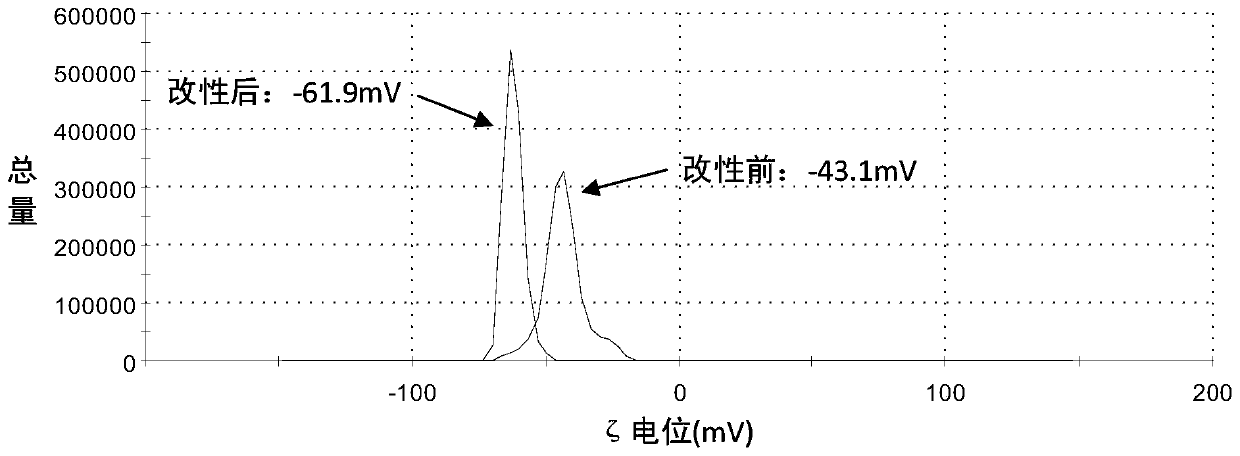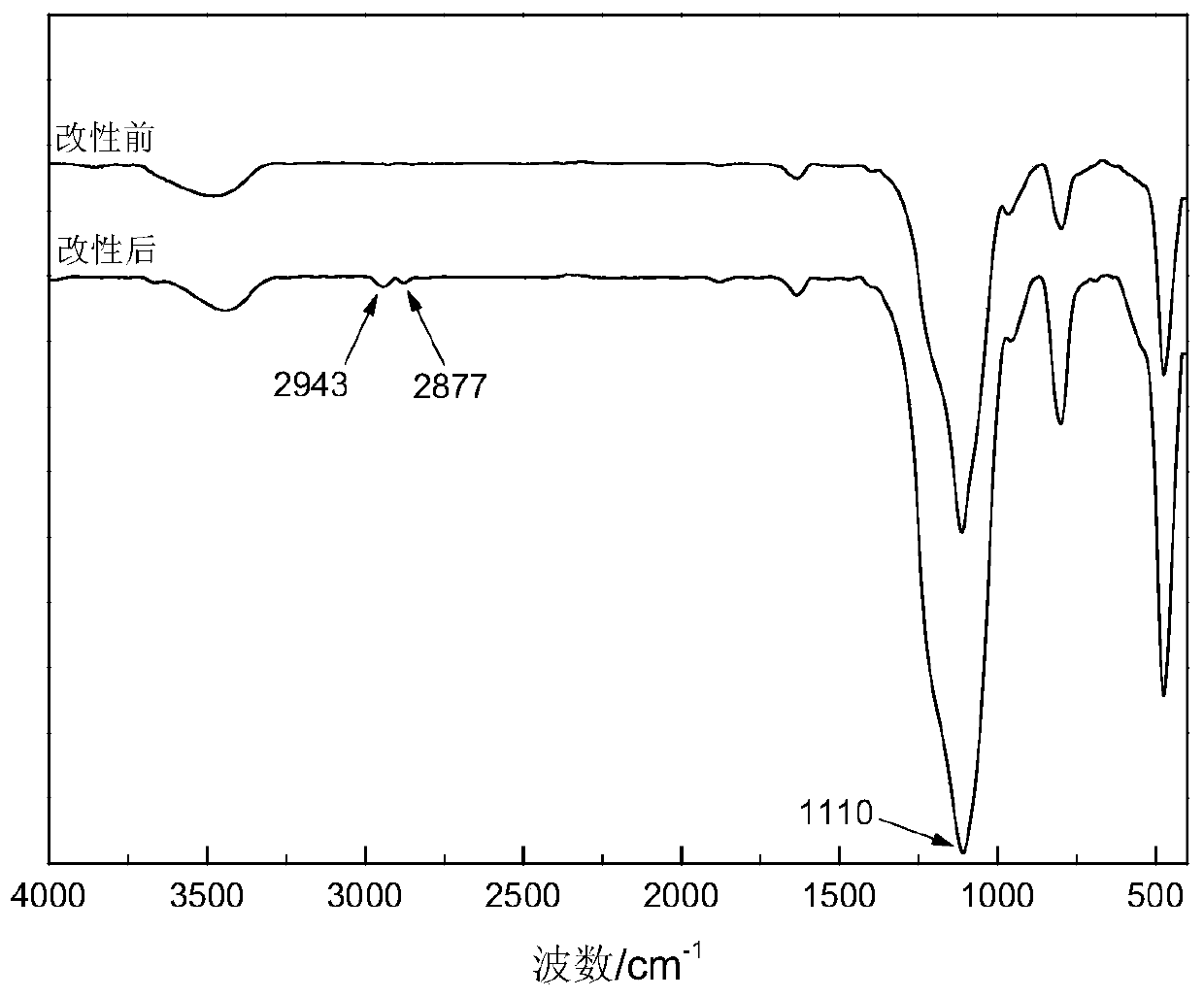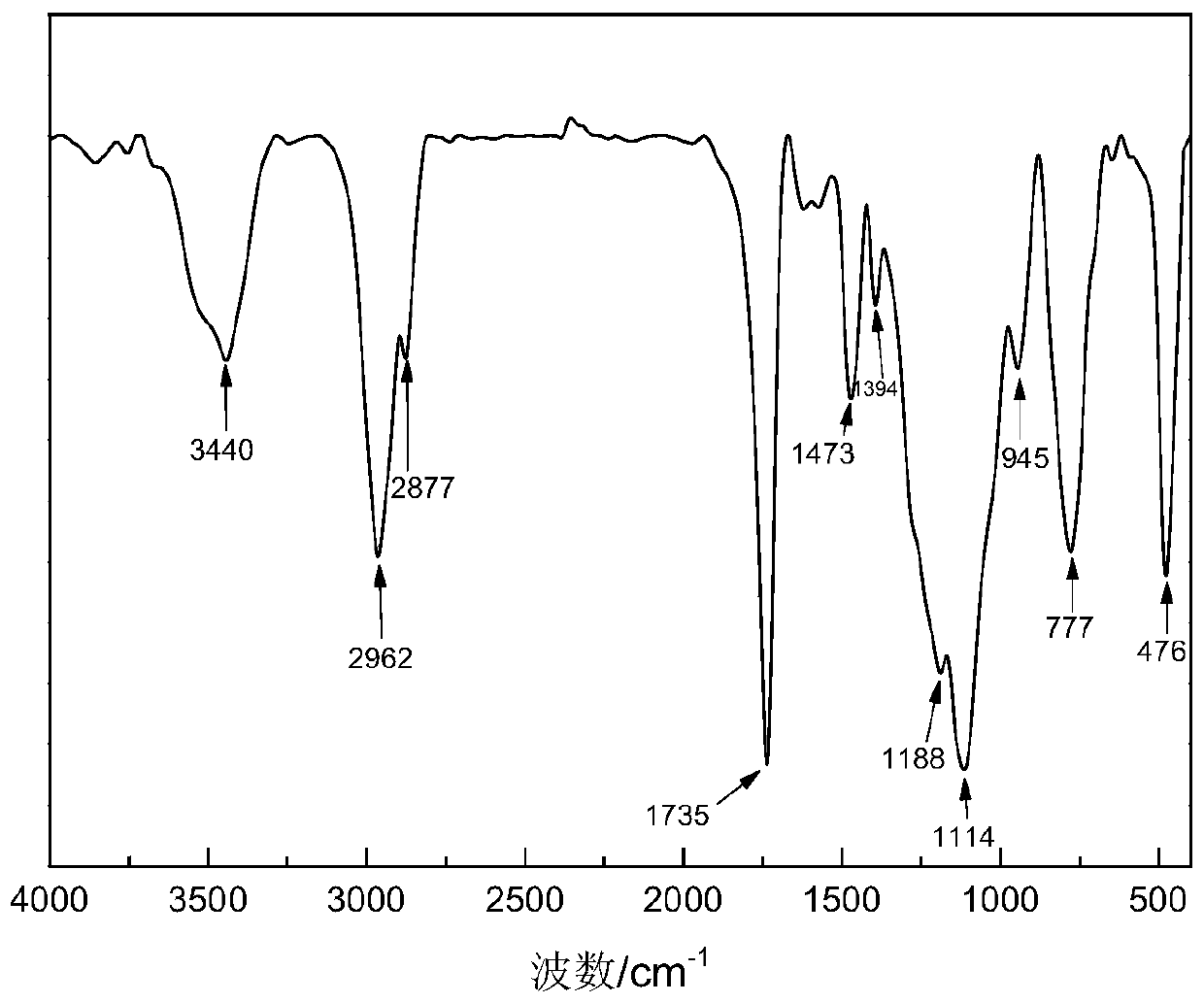One-component organosiloxane/inorganic silica sol hybrid high silicon content polyacrylate aqueous dispersion and preparation method thereof
A technology of organosiloxane and polyacrylate, which is applied in the direction of coating, can solve problems such as difficult preparation, and achieve the effect of improving the comprehensive performance of the coating film, better stability, and improving electrostatic repulsion
- Summary
- Abstract
- Description
- Claims
- Application Information
AI Technical Summary
Problems solved by technology
Method used
Image
Examples
Embodiment 1
[0044] Example 1: Preparation of a single-component organosiloxane / inorganic silica sol hybrid high silicon content polyacrylate aqueous dispersion (ABC-1)
[0045] Add 50 g of propylene glycol methyl ether into a reaction vessel equipped with a stirring paddle, a thermometer, a dropping funnel, and a condenser, and heat up to 80° C. 25.2g methyl methacrylate, 19.6g n-butyl acrylate, 21g n-butyl methacrylate, 4.2g acrylic acid, 1.4g azobisisobutyronitrile and 2.1g γ-methacryloxypropyl trimethoxy Mix the base silane evenly to prepare the monomer initiator mixture, put it in the dropping funnel, add it dropwise to the above solvent within 3 hours, and continue the reaction at 80°C for 4 hours. The temperature was lowered to 40°C, and 5g of triethylamine was added to neutralize the carboxyl groups in the resin to obtain a silylated polyacrylate resin (A-1), which was discharged for later use.
[0046] Add 67 g of silica sol into the reaction vessel, and raise the temperature to ...
Embodiment 2
[0057] Example 2: Preparation of One-Component Organic-Inorganic Silicon / Polyacrylate Hybrid Aqueous Dispersion (ABC-2)
[0058] Silylated polyacrylate resin (A-2) was prepared in the same usage, dosage and process as in Example 1.
[0059] The same usage, dosage and process as in Example 1 were used to prepare the functionalized silica sol (B-2).
[0060] Polyorganosiloxane (C-2) was prepared in the same usage, dosage and process as in Example 1.
[0061] Mix the silanized polyacrylate resin (A-2) and polyorganosiloxane (C-2) uniformly at 40°C, and disperse it into 64g of deionized water at a speed of 3000 rpm, and then in Add the above-mentioned functionalized silica sol (B-2) under the same rotating speed to obtain a high-silicon-content polyacrylate aqueous dispersion (ABC- 2).
Embodiment 3
[0062] Example 3: Preparation of high silicon content polyacrylate aqueous dispersion (ABC-3) hybridized with one-component organosiloxane / inorganic silica sol
[0063] Add 30 g of propylene glycol methyl ether and 40 g of isopropanol into a reaction vessel equipped with a stirring paddle, a thermometer, a dropping funnel, and a condenser, and heat up to 80° C. 25.2g methyl methacrylate, 16.8g n-butyl acrylate, 21g n-butyl methacrylate, 3.5g acrylic acid, 3.5g hydroxypropyl acrylate, 1.4g azobisisobutyronitrile and 2.1g vinyltrimethoxy Mix the base silane evenly to prepare the monomer initiator mixture, put it in the dropping funnel, add it dropwise to the above mixed solvent within 3 hours, and continue the reaction at the same temperature for 4 hours. Cool down to 40°C, turn on the vacuum pump, pump out the isopropanol, then add 4.2g of triethylamine to neutralize the carboxyl groups in the resin to obtain a silylated polyacrylate resin (A-3), and discharge it for later use....
PUM
| Property | Measurement | Unit |
|---|---|---|
| particle diameter | aaaaa | aaaaa |
| hardness | aaaaa | aaaaa |
| hardness | aaaaa | aaaaa |
Abstract
Description
Claims
Application Information
 Login to View More
Login to View More - R&D
- Intellectual Property
- Life Sciences
- Materials
- Tech Scout
- Unparalleled Data Quality
- Higher Quality Content
- 60% Fewer Hallucinations
Browse by: Latest US Patents, China's latest patents, Technical Efficacy Thesaurus, Application Domain, Technology Topic, Popular Technical Reports.
© 2025 PatSnap. All rights reserved.Legal|Privacy policy|Modern Slavery Act Transparency Statement|Sitemap|About US| Contact US: help@patsnap.com



